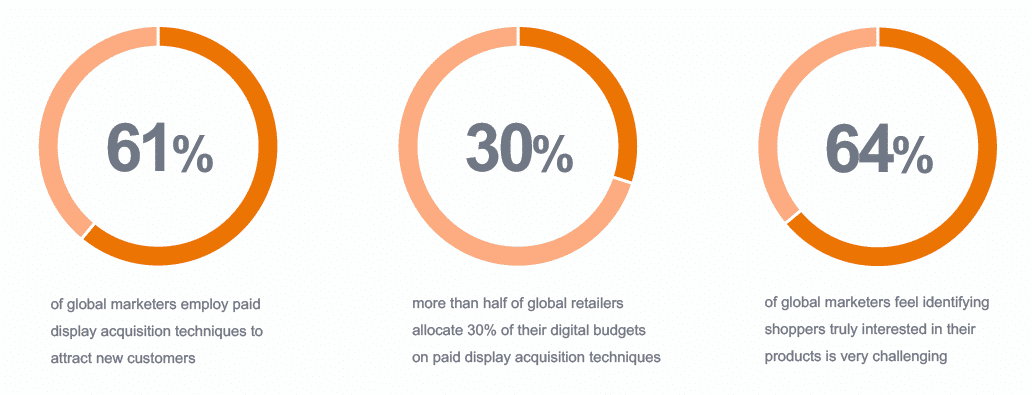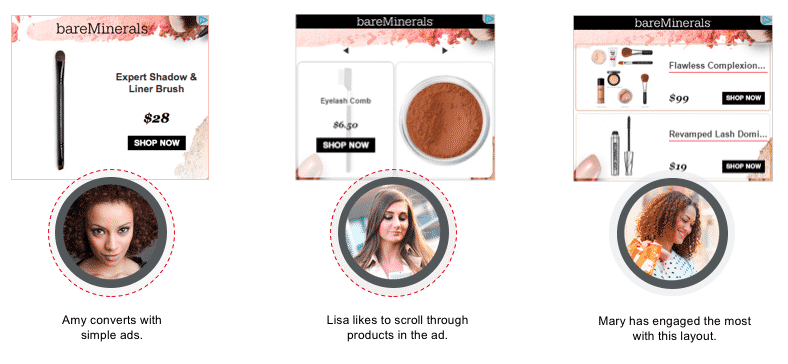Whether you’re a global giant, a mid-sized company, or a small startup, the need to meet ever expanding growth and profit goals makes finding and converting new customers a crucial part of any digital marketing plan. But acquiring new customers in today’s online landscape is not a simple or straightforward task. Prospects are using multiple devices and channels, and they’re exposed to ads and different content constantly. Finding and attracting the right people with the right messages at a reasonable cost can be a challenge.
If you’re running an online customer acquisition marketing campaign, or planning on launching one, there are several things you can do to maximize your ROI.
But first, let’s define things.
Customer acquisition is the act of gaining new customers. It includes any method used, both offline and online, to find new customers and encourage them to make a purchase. Common customer acquisition tactics include cold calls and direct mail, and online tactics like email, social media, content marketing, SEO, paid display, and paid search ads.
We’re going to focus on online customer acquisition marketing, specifically paid display, as our data shows that more than half of global marketers are using it as part of their acquisition strategy.

Now, let’s look at the factors you should consider to help you generate higher ROI from your new customer acquisition campaign.
The success of your customer acquisition marketing strategy depends heavily on the data you have access to and the technology that makes it all happen. You need to be able to separate new prospects from existing customers, identify prospects that are most likely to convert for your products, and follow them across devices, browsers, and apps.
For all these reasons, look for a customer acquisition solution with a sizeable shopper data pool—the bigger the better. But be sure to read the fine print – some charge additional fees for access to their data.
Also, make sure your solution has the machine learning technology necessary to do the heavy lifting in terms of analysis and optimization of that large data pool. You’ll need something that can provide a granular analysis of behavioral data and shopping patterns and can fine tune the campaign based on performance against goals. Because of the massive amount of data that needs to be synthesized, and the continual optimization that is required, sophisticated machine learning is necessary to maximize ROI.
To win as many new customers as possible, you want a customer acquisition campaign with the broadest reach possible. For example, are your ads limited to a single network or to exchanges only? What kind of publisher relationships exist, i.e. how many publishers are you able to serve ads on? Do you have access to premium inventory?
Look for a solution with broad publisher reach that will get your ad in front of the maximum number of high quality prospects, in a prominent position, and when they’re actively engaged in shopping.
Customer acquisition marketing programs are typically offered with CPC or CPM-based pricing. The best model for you depends on your business goals.
CPC stands for “Cost Per Click”, and it means that you only pay when someone clicks on your ad. When you have a specific performance goal, like increasing revenue, traffic or sales, CPC is typically the model of choice.
CPM stands for “Cost Per Mille,” or 1,000 impressions, and it means that you pay a certain amount for every thousand impressions gained, regardless of whether someone clicked on your ad or not.
If ROI is an important KPI, consider a solution that offers CPC-based pricing, so you can more closely track performance and results.
Market research data shows that personalized ads lead to more sales and better ROI. In fact, 88% of U.S. marketers reported seeing measurable improvements due to personalization — with more than half reporting a lift greater than 10%. (Evergage)
Many customer acquisition solutions only offer static creative, which means that you build a set inventory of ads that are delivered to groups of people based on rules you define. Others allow some dynamic capabilities but limited to showing best-selling products or a list of products manually provided.
To maximize the performance of your customer acquisition marketing efforts, upgrade to dynamic creative. This allows you to deliver ads personalized for each prospect, based on their unique shopping behaviors and product interests. Dynamic creative optimization technology automatically selects the best color scheme, layout, and call-to-action within your brand guidelines so you can drive conversions from every ad.

Our data shows that nearly half of sales come from products that were never viewed on the site. Which means that if a shopper never saw your ad, they might never have made a purchase.

It’s a smart move, then, to include product recommendations in your acquisition campaigns. With product recommendation technology, you can go beyond displaying a static list of your top selling products and show specific items that a shopper is highly likely to be interested in. If Jane shows a propensity for shoes, an ad featuring your top selling apparel will be ignored. But an ad that includes a variety of footwear may just earn you your next new customer.
Want to make the most of your acquisition budget? Look for a solution with predictive bidding technology. Predictive bidding uses machine learning to analyze large data sets and determine when and how much to bid to reduce the cost of each sale. Predictive bidding also enables you to optimize the model based on your specific business goals, such as ROAS, CPO, or COS.
1. Make sure you’ve got a big enough data pool to work with, and sophisticated technology to analyze and optimize that data.
2. Opt for a solution that offers the broadest reach possible.
3. Choose the right pricing model for your business goals.
4. Use dynamic creative optimization technology to create 1:1 personalized ads in real time.
5. Use product recommendation technology to increase your conversion potential.
6. Take advantage of predictive bidding technology to optimize your spend.